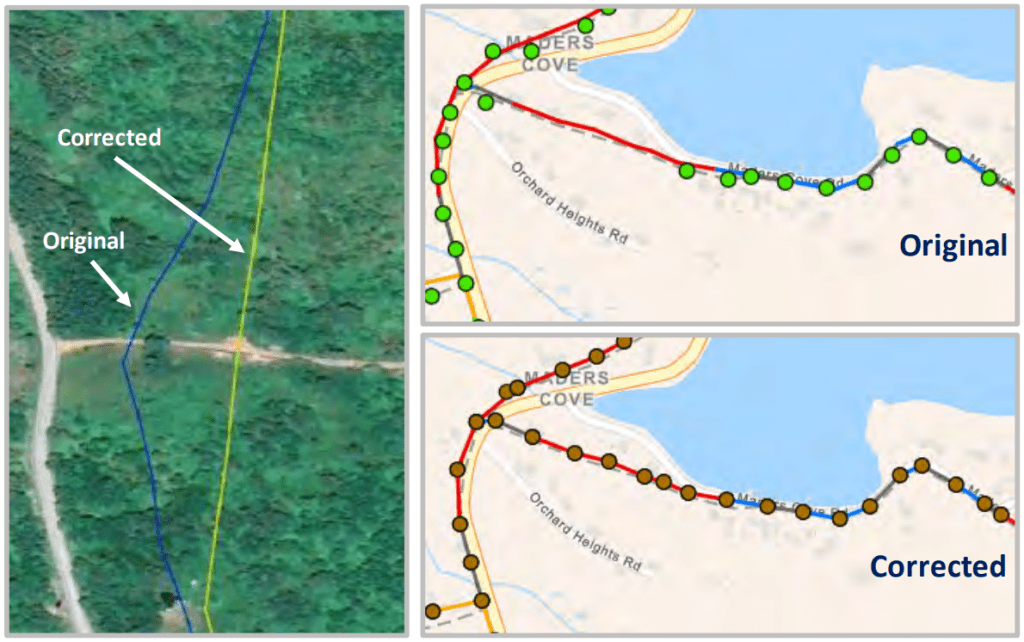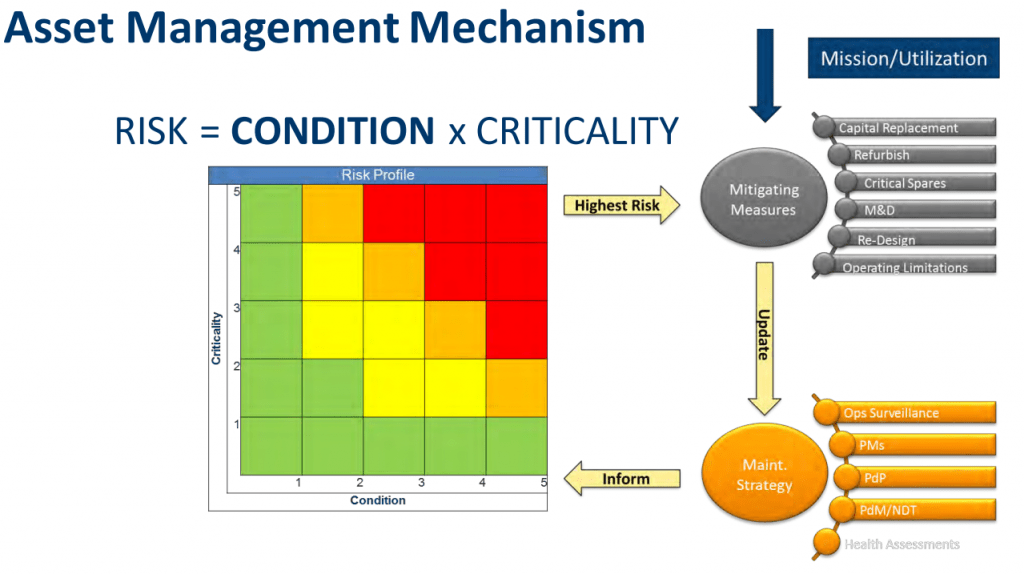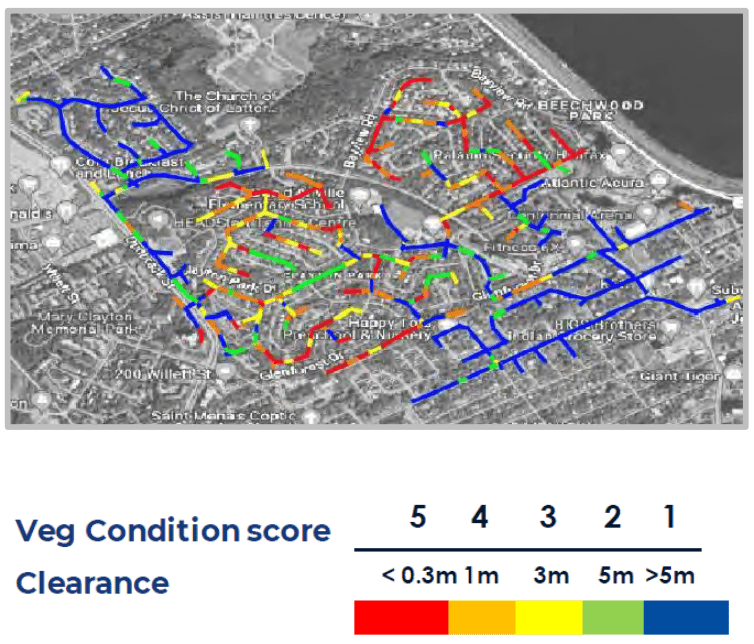Nova Scotia Power assesses more lines in difficult locations with satellites and AI: DistribuTECH 2024
- Worsening climate change-related weather was making it more difficult for Nova Scotia Power (NSP) to manage and assess their heavily treed distribution network.
- They used AiDASH IVMS™ to build actionable data that lets them improve and scale their GIS and reduce manual work.
- They increased confidence in their risk assessment, improved SAIFI/SAIDI, documented improvement for all stakeholders, and improved worker safety.
Nova Scotia is a beautiful place — especially in the summer, said Mike MacMillan, Manager of Asset Performance for Nova Scotia Power (NSP), from the DistribuTECH 2024 stage.
But for a narrow strip of land connecting it to the rest of North America, Nova Scotia is almost entirely surrounded by the Atlantic Ocean. Part of Canada, but roughly parallel to Maine, the province’s unique geography is marked by coastline and heavy forest. “For a utility company, that can be a really challenging environment to work in and to keep the lights on,” said MacMillan.
The utility serves 550,000 residential, commercial, and industrial customers, which is about 95% of all electrical service in the province. “We have about 28,000 kilometers of distribution lines, so we have a lot of spans to manage,” he said. With 75% of the province covered in trees, they have to continuously work to mitigate their impact on their lines.
Heavy vegetation and increasingly extreme weather
NSP is concerned with reliability, safety for its workers and contractors, and climate change.
The number one cause of NSP’s outages are related to vegetation coming into contact with their lines, and it’s simply a difficult logistical and cost challenge to manually inspect all their lines and feeders.
Vegetation management is generally a high-risk endeavor. Even getting people to the sites to perform assessments is high-risk, especially with the terrain NSP deals with. “We have ravines, forested areas, hard-to-reach areas,” said MacMillan. Navigating that terrain can be risky.
Nova Scotia has been hit with worse and worse climate change-related threats, too. MacMillan starkly laid it out: “In 2022 and 2023, we saw two major hurricanes hit our service territory. We saw an extreme cold event where we set an all-time peak load for our province. We’ve seen extreme flooding events where our infrastructure was impacted. And we’ve also seen the largest wildfires in provincial history.”
NSP staff recognize that they must adapt. They want to become more efficient in their vegetation management and fold that back into their overall asset management strategy for understanding risk.
And with that, they aim to be proactive. They want to be sure they’re attacking high-risk areas.
“And we want to demonstrate quantifiable progress,” said MacMillan. He says they want to be able to go their regulator and customers alike and tell them: “This is what we’re doing. Here’s the progress we made. Here’s how it’s impacting your reliability.”
Building actionable data
“So, we turn to technology to help solve these problems. And for us, satellite imagery and AI presents a really attractive solution to some of the problems that we’re facing,” said MacMillan. Accordingly, they launched a pilot with AiDASH Intelligent Vegetation Management System™ (IVMS).
This technology makes them more efficient. “We can go anywhere with satellite,” he said. “We don’t have to drive 28,000 kilometers. We don’t have to walk it. We don’t even have to fly it.” Instead, they can look at images and make decisions.
That lets them collect data on all their areas quickly and at scale. By offloading this work to AI, they free up their personnel to do other tasks that humans are better at performing. For NSP, those tasks pertain to things like safety or contractor oversight.
They’ve found that the data itself is superior, too. It helps with consistency, because they can compare data they get from AiDASH IVMS to what their assessors find in the field. Assessors perform specialized work, and you have to depend on the expertise of a specific person. By pairing the satellite and AI data with assessors’ work, they’re less dependent on the experience level of any particular assessor.
NSP also folds this data back into their vegetation GIS and integrates it into their existing processes for mitigating risk and understanding feeder conditions.
“We’re getting a real picture of the overall condition so we can make better decisions,” he said.
MacMillan showed an image indicating where their system was originally incorrect about line location and vegetation growth versus where AiDASH IVMS corrected it. It’s a difference of many meters.

AiDASH IVMS enabled them to be much more efficient in sending out their crews where they specifically needed to trim—and where they didn’t.
“That really helped us build a foundation to say, yeah, the results we’re getting are actionable, they’re accurate, [and] they’re going to provide some value,” he said.
MacMillan also shared NSP’s Asset Management Mechanism matrix:

They use this matrix to measure conditions, which improves their ability to evaluate risk. They rank it on a scale of 1-5, with 5 being the most severe.
When AiDASH IVMS mapped a particular feeder for NSP, this was the result:

MacMillan said they challenged AiDASH and pushed the envelope of what’s even possible with current imagery. For NSP, a 5 out of 5 on their matrix is within a mere 30 cm of the line. And AiDASH IVMS delivered.
Better risk profiling, increased safety
The results were clear. “When we went out to ground truth these, we found that around 80% of the spans [that AiDASH IVMS measured] matched our assessment exactly,” said MacMillan.
NSP’s risk profiling is much stronger now. They can include vegetation condition in their overall risk profile and combine that with the asset condition information they glean from inspections. The span-by-span assessment AiDASH IVMS provides enables much deeper analysis, and they can add in performance data around SAIFI and SAIDI.
Altogether, it provides NSP with a holistic view of where their risks are in the distribution system.
They can also target their resources much more effectively and be proactive in mitigating threats to the system.
Another critical benefit: “We can also demonstrate the effectiveness of our investments,” he said. When they want to invest resources into vegetation management, regulators want to see what the rate payers get for that money. NSP’s own internal stakeholders want to see justification for those investments, too, so they have confidence the company is making the right decisions for their customers.
The resources AiDASH IVMS frees up allows NSP’s human experts to focus on tasks for which they’re best suited, like contractor management and building better vegetation management plans.
That human factor is of enormous importance to NSP, both in terms of reclaiming their time and ensuring better safety for workers.
NSP’s benefits from using AiDASH IVMS include:
- Ability to integrate new data into GIS models, which increased confidence in their GIS models.
- Systematic, detailed, and accurate risk assessments (80% accuracy with control assessment) that provide deeper overall distribution risk assessment and management.
- Support for enhancement of vegetation management program.
- Ability to demonstrate and document effectiveness of interventions.
Projected improvements are:
- Reduce inconsistency and time spent manually assessing vegetation.
- Improve SAIFI/SAIDI with targeted actions.
- Increase contractor safety oversight.
- Resource efficiencies.
“This project really opened us up to the potential of this approach in the future,” added MacMillan.
Get more information about AiDASH’s Intelligent Vegetation Management System here.
AiDASH is the leader in Intelligent Sustainability Management
Ready to see it in action for yourself?
Get a demo today.
The best collection of tools, tips, guides, and industry stories – straight to your inbox.
Subscribe to our newsletter
